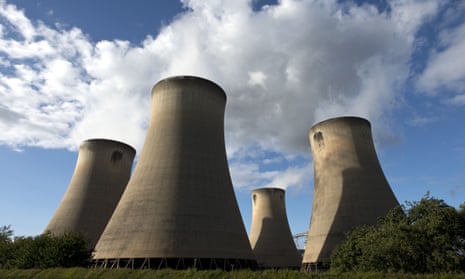Given the threat of climate change, what should the world do with its reserves of fossil fuels? Some say keep it in the ground. Others say fossil fuels are needed to in order to provide electricity to the poorest areas of the world.
With the announcement Tuesday of its new $20m Carbon XPrize, the non-profit XPrize Foundation is taking a middle ground – launching a competition to find new uses for carbon dioxide (CO2), the greenhouse gas emitted by coal and natural gas plants. It’s intended to allow the continued burning of fossil fuels while reducing or eliminating their climate impact.
“How do we take that CO2 that’s coming from power plant emissions, and incentivize teams to create novel products?” said Paul Bunje, senior scientist for energy and the environment at the XPrize Foundation. “The CO2 could be turned from a waste into a valuable product.”
The award, not surprisingly, is sponsored by fossil fuel interests: NRG Energy, a coal-burning utility as well as a strong advocate for solar and wind power, and the Canadian Oil Sands Innovation Alliance (COSIA), a coalition of companies that extract oil from Alberta’s oil sands, which are a mixture of sand, water, clay and heavy oil.
Citing estimates from the International Energy Agency, the XPrize Foundation says that 82% of the world’s energy supply is derived from fossil fuels and that overall energy demand is expected to grow 37% by 2040.
“As we move toward a low- to zero-emission future, we’ll need to continue using fossil fuels to meet current energy demands,” said Sicily Dickenson, NRG’s chief marketing officer.
Some environmentalists challenge that claim. Michael Brune, executive director of the Sierra Club, has long argued that there’s no such thing as “clean coal” because capturing CO2 from smokestacks does nothing about other pollutants, like mercury, and fails to address the environmental fallout from coal mining. Greenpeace has also called for an immediate phase-out of fossil fuels.
Andrew Logan, director of the oil program at the Ceres environmental coalition, called the prize “a step forward”, but said, “It really is about the long term. It shouldn’t discourage action [to reduce emissions] in the here and now.”
As it happens, the XPrize Foundation is taking multiple approaches to the climate crisis. It is developing prizes for renewable energy generation, advanced energy storage and wireless power transmission. And it previously awarded an XPrize for super-efficient cars.
The newest XPrize is actually two awards: $10m for a technology that proves itself at a coal plant and $10m for one that does so at a natural gas plant. As Bunje explained it, anyone can enter (at carbon.xprize.org) but judges will sift through the initial entries and whittle them down into smaller groups of competitors who will be eligible for expert advice and grants of $500,000 each from the foundation to build out their projects. The foundation doesn’t expect to award the two grand prizes until 2020. “The winning team will convert the most CO2 emissions into the highest value products,” he said.
Numerous companies are already seeing ways to repurpose CO2. Liquid Light, which was spun off of a Princeton University lab, converts CO2 into a variety of commercially important chemicals. Novomer makes plastics and chemicals from CO2. Skyonic uses CO2 as an ingredient in sodium bicarbonate, commonly called baking soda, hydrochloric acid and bleach.
None of these startups, however, have achieved sufficient scale to be a climate solution, and other efforts have fizzled. Calera, a much-hyped Silicon Valley startup that saays it can turn CO2 emissions into cement, has not yet lived up to its promise. Meanwhile scientists have been trying for years to recycle CO2 into liquid fuels.
If nothing else, Bunje said the Carbon XPrize should help change people’s view of CO2. “We want a sea-change, a shift in thinking about what’s possible with carbon dioxide,” he said. “We have to change the way our energy system deals with CO2.”
- A previous version of this article misspelled the name of NRG’s chief marketing officer, Sicily Dickenson.

Comments (…)
Sign in or create your Guardian account to join the discussion